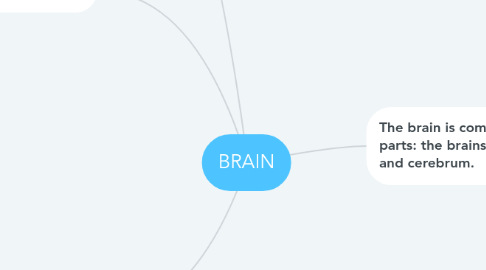BRAIN
作者:Ammar Iskandar Zamzuri

1. The cerebrum is divided into four lobes: frontal, parietal, temporal, and occipital.
1.1. Frontal lobe Personality, behavior, emotions Judgment, planning, problem solving Speech: speaking and writing (Broca’s area) Body movement (motor strip) Intelligence, concentration, self awareness
1.2. Parietal lobe Interprets language, words Sense of touch, pain, temperature (sensory strip) Interprets signals from vision, hearing, motor, sensory and memory Spatial and visual perception
1.3. Occipital lobe Interprets vision (color, light, movement)
1.4. Temporal lobe Understanding language (Wernicke’s area) Memory Hearing Sequencing and organization
2. How does the brain work?
2.1. Your brain contains billions of nerve cells arranged in patterns that coordinate thought, emotion, behavior, movement and sensation. A complicated highway system of nerves connects your brain to the rest of your body, so communication can occur in split seconds. Think about how fast you pull your hand back from a hot stove. While all the parts of your brain work together, each part is responsible for a specific function — controlling everything from your heart rate to your mood.
3. Facts About the Human Brain
3.1. The human brain, weighs only about 3lbs. (around 1.5 kg.), makes up just 2% of the body weight and uses around 20% of the body’s oxygen and blood. 75% of the total brain mass is water.
3.2. It is the fattest organ in the body, contains 100 billion neurons or nerve cells (15 times the total human population on earth) and a trillion glial cells and has around 150,000 miles of blood vessels.
3.3. The brain processes information as slow as 0.5m/sec to as fast as 120m/sec. The brain can survive without oxygen for 4-6 minutes after which it begins to die. Lack of oxygen for 5-10 minutes can lead to permanent brain damage.
4. The brain is composed of three parts: the brainstem, cerebellum, and cerebrum.
4.1. The cerebrum is the largest part of the brain and is composed of right and left hemispheres. It performs higher functions like interpreting touch, vision and hearing, as well as speech, reasoning, emotions, learning, and fine control of movement.A
4.2. The cerebellum is located under the cerebrum. Its function is to coordinate muscle movements, maintain posture, and balance.
4.3. The brainstem includes the midbrain, pons, and medulla. It acts as a relay center connecting the cerebrum and cerebellum to the spinal cord. It performs many automatic functions such as breathing, heart rate, body temperature, wake and sleep cycles, digestion, sneezing, coughing, vomiting, and swallowing. Ten of the twelve cranial nerves originate in the brainstem.


